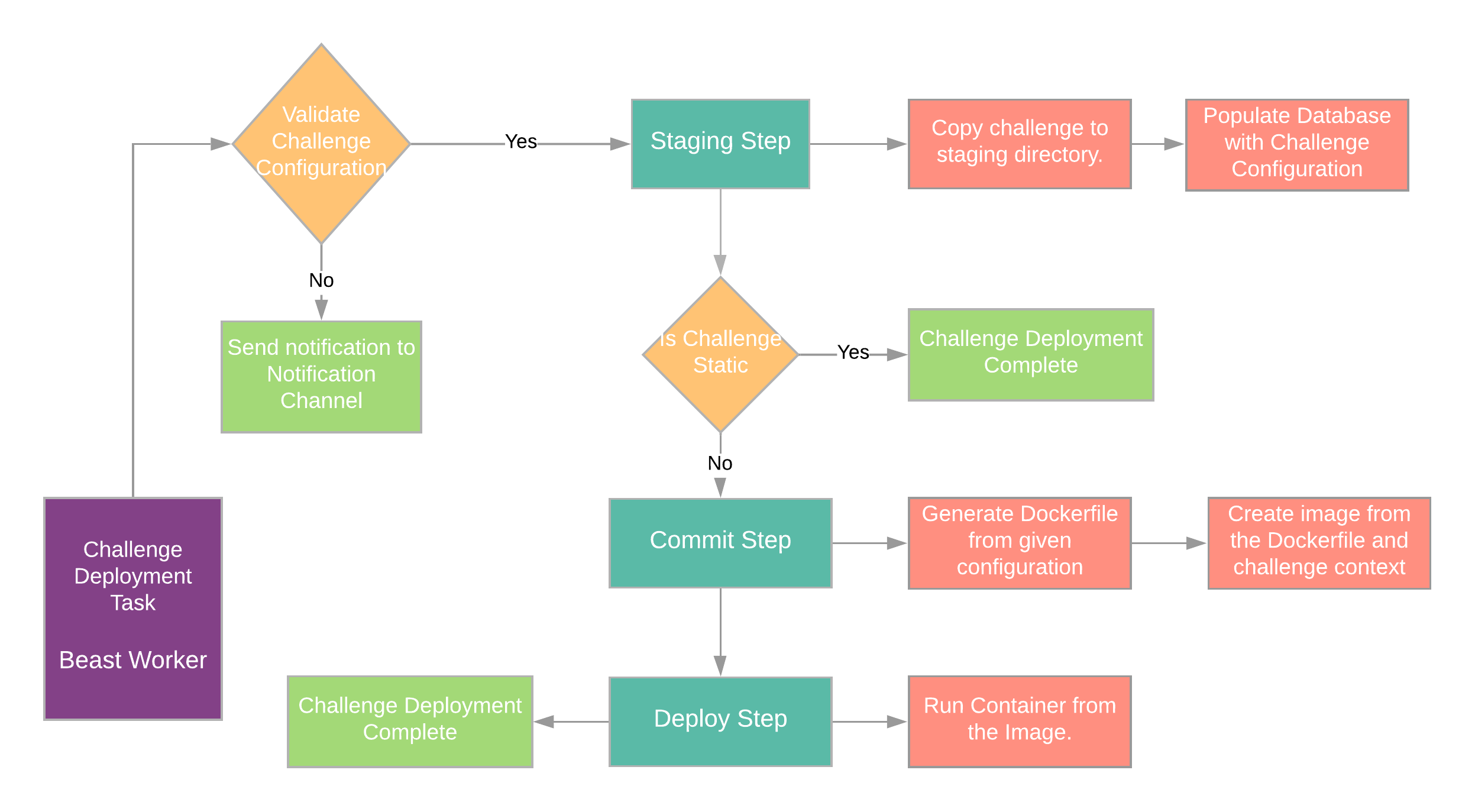Architecture
This section deals with how the different pieces of beast fall together to create a robust and flexible deployment pipeline. For internals of each section itself go to respective documentation pages.
Important components of beast are described below:
API Server
API server is the interface provided by beast to interact with the underlying application. All the actions performed by beast are propogated by an external agent from this point. The API server is a HTTP REST API service built on top of go-gin framework. For authentication purposes it uses JWT which can be optionally turned off when running the server.
Requests for beast API are split across five namespaces
- manage: Challenge management related APIs. Ex. Deploy, Undeploy etc.
- info: Challenge information related APIs. Ex. ChallengeInfo etc.
- status: Challenge status related APIs. Ex. Challenge status
- remote: Beast remote repository related APIs. Ex. SyncRemote
- config: Beast global configuration related APIs. Ex. Reload Config
- notification: Competition notification related APIs. Ex. Add Notifications
- admin: Competition related APIs requiring admin prevalages. Ex. Competition Stastics
Manager
This part is the brains of beast and does all the action corresponding to lifecycle management of challenges along with managing configuration
and authentication. The part lives inside core/ directory and uses helpers/interfaces from inside of pkg/ and /utils.
Container Runtime
Container runtime is a wrapper around docker client library which provides beast with helper function to deal with underlying container runtime.
Currently this only supports docker as an underlying container runtime but we will soon be creating a generalized interface which can be fulfilled
by most of the container runtimes. Something similar on the lines of CRI(Container Runtime Interface for kubernetes).
Queue and Workers
All the tasks performed by beast are non synchronous and are handled by a queue. Whenever a new action is performed corresponding to beast API a new task is created using the action configuration and pushed to an internal queue. The result is returned immediately by the API server notifying about the start of the process.
Beast workers are the actual underlying goroutines which handles the tasks assigned by the Queue. They perform the required task and then take on the next. Consider them as the threadpool for beast.
Challenge Flow

Deployment Pipeline
